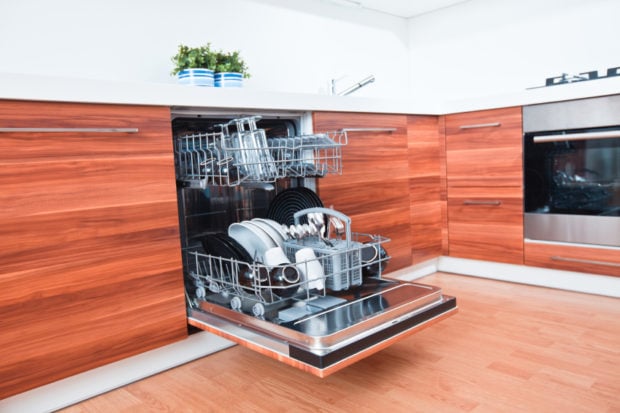How to Properly Load Your Dishwasher
When it comes to your dishwasher, it’s often the appliance in the kitchen that is used the most frequently. We rely on our dishwasher to thoroughly clean and remove dirt and food from our dishes, but there are a few problems that can occur as a result of incorrect loading.
We all know how annoying it is when your plates are still dirty, even after a cycle has been completed. When this happens, it may lead you to believe that the heating or drying elements on your appliance are faulty, and your dishwasher needs repairing, however this isn’t always the case.
Often your kitchen utensils remain uncleaned due to incorrect loading of the machine. Read on to find out how using the loading techniques outlined below can help you to distinguish between a faulty dishwasher and one that has been incorrectly loaded:
Place items at an angle
When you’re inserting items into the base of the unit, it’s essential to lay them down at an angle.
This helps dishes that are curved such as bowls and cups be exposed to the water and detergent in order to easily reach all areas of the dish, giving it the ability to be cleaned and all bacteria thoroughly removed.


Use the separators
You should also use the separators that come with your dishwasher to help balance the items and ensure that they’re able to be reached by water and soap.
Avoiding overlapping is key to using these separators properly, and this will prevent you from overfilling the inside of the appliance. Both of these issues can lead to your dishes still being dirty once the cleaning cycle has been completed, or the items still being wet as they weren’t able to be reached by the drying element.
Place cutlery handle-down
In order for your dishwasher to clean your cutlery properly, place the items handle-down within the cutlery compartment.
This means that the dirtiest parts of the knife, fork and spoon are exposed and able to be cleaned properly.
Put plastic on the top shelf
When you’re loading your dishwasher, you should also be wary about where you place plastic items such as tupperwear.
Even if you’re confident that the plastic items you’re inserting are dishwasher-safe, you should load the items on the top shelf inside the appliance. This is because the unit’s heating element is towards the base of the unit and the plastic should be far away to prevent the chances of it melting and leaking chemicals.
Insert large items at the back
Instead of placing items in any order within your dishwasher, you should place larger dishes towards the back and outside of the holding compartments.
Things such as pans, large bowls and plates need to be strategically placed in order to prevent the large dish from blocking water and reaching other items.
If you regularly use these techniques when loading your dishwasher, you may find that the dishes still aren’t being cleaned thoroughly. This could signal a fault with the appliance, so you may need a dishwasher repair specialist to get the machine back into good working order.